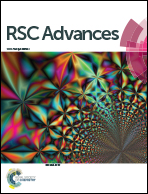Immobilization of copper ions on chitosan/cellulose acetate blend hollow fiber membrane for protein adsorption
Abstract
An affinity membrane was prepared by immobilizing copper ions (Cu2+) on chitosan (CS) and cellulose acetate (CA) blend hollow fibers, and the affinity membrane (denoted as CS/CA-Cu) was evaluated for its performance in the adsorption of a model protein, Bovine Serum Albumin (BSA). The analysis indicated that the amount of copper ions coupled on CS/CA-Cu reached around 3.9 mg per g-membrane. The experimental results showed that CS/CA-Cu achieved a high adsorption capacity of the 69 mg-BSA per g-membrane, under the typical solution condition of pH at 7.4 and ionic strength at 0.12 M, with the nonspecific adsorption being as low as less than 15%. The adsorption isotherm followed the Langmuir model and the adsorption kinetics exhibited both transport-limited and attachment-limited behaviors. CS/CA-Cu also performed favorably in the neutral pH range and at low ionic strength.



 Please wait while we load your content...
Please wait while we load your content...